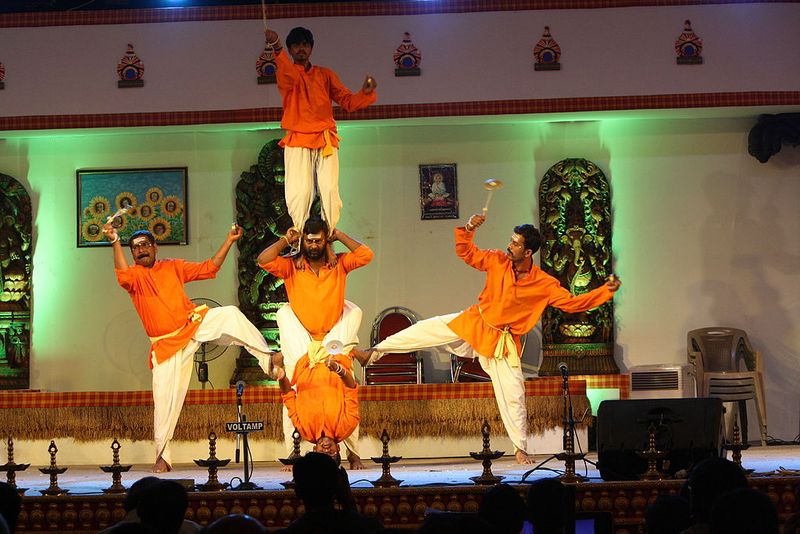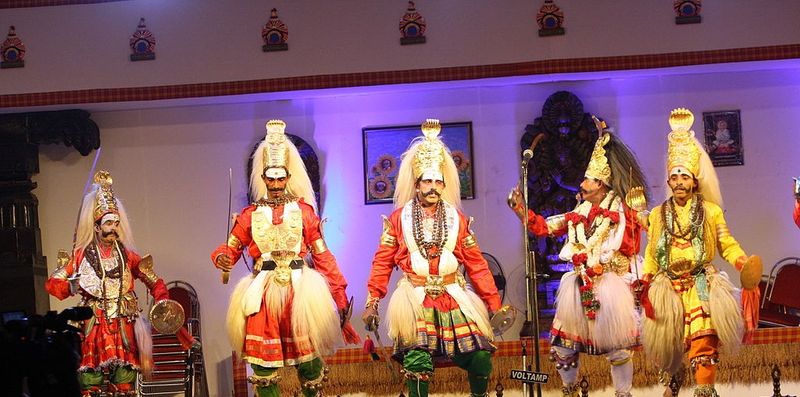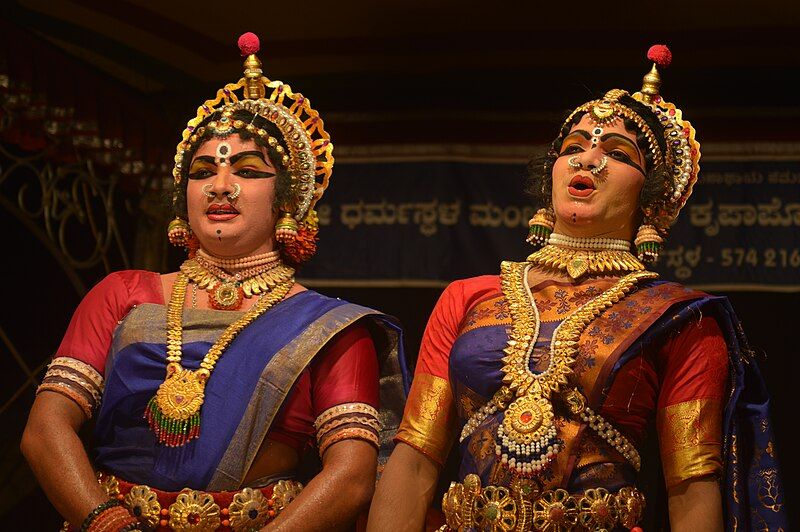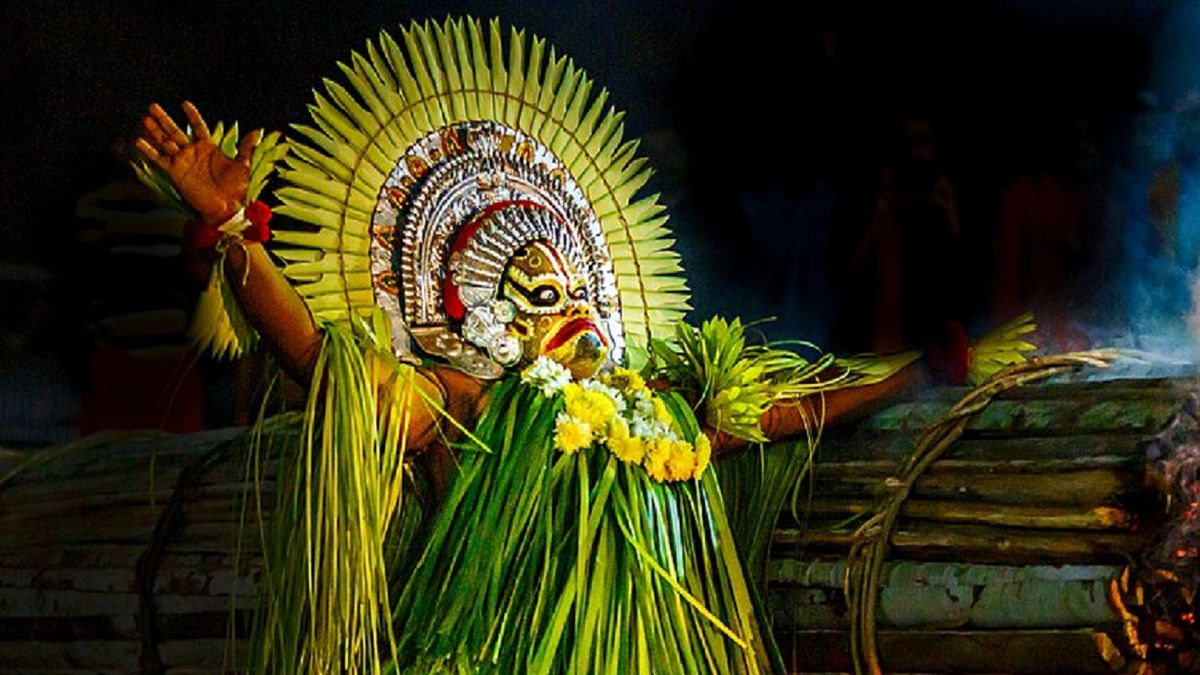Known for its heritage destinations, the ‘land of gold’ — Karnataka, is a very culturally rich state where the countryside preserves vibrant folk dances and dramas that define the distinctive beauty of the region. Not only do they provide a source of entertainment but also work as a window that gives a sharp peak inside the coastal districts — history, heritage, culture and region.
The verses and actions of folk dance of Karnataka narrate tales of Indian mythology from the perspective of lyricist and dancer. Additionally, the social themes these acts portray aim to empower communities. So, let's hop on to an expedition to discover some of the famous folk dances of Karnataka.
Explore the folk dances of Karnataka
Dollu Kunitha

Renowned for its exuberant performances at significant festivals and events held all around the state, Dollu Kunitha is a ancient dance form originated from the traditions of the Kuruba Gowda community in North Karnataka and is strongly linked to the worship of Sree Beeralingeshwara — a manifestation of Lord Shiva.
The word Dollu relates to the drum, which is associated with Lord Shiva, who is well-known for his ferocious Bhairava Tandava dance, which he does when he is furious. The dance form is performed by a troupe of ten to twelve drummers, this requires a lot of strength since they have to carry the heavy drum and dance for long stretches of time.
Kamsale Nrutya

In the Mysore district, Kamsale dance is a well-liked folk dance of Karnataka . This one is another intense dance style that is strongly linked to Male Mahadeswara’s devotional ceremonies.
Combining martial agility with artistic sublimity in a wonderfully harmonious way — the dance form is expressed. The melodies that praise Lord Mahadeswara's splendor are accompanied by the rhythmic playing of a Kamsale, a disc that resembles a cymbal.
Kamsale dance is typically performed in front of temples as a form of devotion to the Lord in big groups of ten to twelve dancers.
Bhootha Аradhane

Bhootha Aradhane is a prominent dance form of Uttara Kannada. The purpose of performing this dance is to ward off evil eyes and spirits. The dance form dedicated to worship of Bhootha Aradhane (Gana) — an idol parade accompanied by drums and firecrackers.
A dancer carrying a sword and dressed as a Bhoota (holy spirit) circles the plinth at the conclusion of the parade. The dancer's abrupt changes in pace, from fast to slow, suggest that he has become divine. The procession creates a distinct and unsettling atmosphere.
Veeragase

Veeragase folk dance symbolises the bravery and heroism of the god Veerabhadra. Inspired by Hindu mythology, this dance is done on Hindu holidays in the months of Karthika and Shravana. It is a passionate, dramatic dance with strong movement patterns that has its roots in Hindu mythology — Jangama community delivers energy-sucking dance moves with great intensity.
Dancers dress in kaavi-coloured dhotis, wooden plaques with the image of Lord Veerabhadra on them, necklaces made of Rudrakshamalas, and headdresses made of white-turban. Additionally, to their eyebrows and ears, they also apply Vibhooti.
With an unsheathed sword in their right, all to the rhythm of Chamel and Karadi drums, there are two, four, or six people in the dance ensemble.
Yakshagana

Practised and performed by amateur actors, Yakshagana is a classical folk dance of Karnataka that is staged during winter harvest festival. The precise translation of the term Yakshagana is heavenly music.
The dance form involves dramatic, musical, and dance aspects that are taken from epics of Ramayana, Mahabharata, and Puranas. The Yakshagana show usually starts with a Puja honouring Lord Ganesha's divinity, after which come the comedy figures known as Kodangis. Additionally, a group of three musicians typically perform traditional instruments like Chandelions, Maddales, and Talas.




_1681046990421_thumb_300.png)